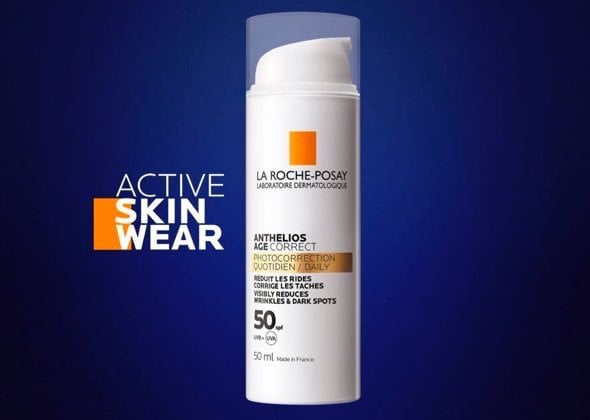WHAT CONSTITUTES
A SKIN ALLERGY REACTION?
What is allergic skin?
There are several different types of skin allergy. The most common allergic reaction rash is called contact dermatitis. This occurs after your skin comes into contact with something you are allergic to (an allergen). This type of skin allergy occurs 24-48 hours after contact with the allergen.
What does skin allergy look like?
An allergic rash can take many forms, including redness, swelling, blisters, and oozing. The #1 symptom you’ll notice is intense itching. This allergic skin rash can take weeks to fade.
What causes skin allergy?
Skin allergy is caused by contact with allergenic substances in your environment, jewellery, cosmetics, washing powder, etc. The usual suspects are chemicals in unsuitable cosmetics products (fragrances, preservatives, plant extracts), house dust mite and certain metals such as nickel.
What can I do about skin allergy?
If you have an allergic skin rash, your first step is to find out what it is that you’re allergic to. In many cases, allergic skin reactions on the face are due to ingredients in ill-adapted cosmetics (remember, “organic” or “natural” products can still cause skin allergy). You may wish to see an allergist who can perform patch tests to work out what the culprit is. Once you know what is causing your skin allergy, it is important to eliminate it from your cosmetics choices and daily routine.
Click HERE to find out more about how to take care of your allergic skin.
Want an overview of the differences between sensitive, allergic and reactive as well as the triggers and solutions for each? It’s all waiting for you HERE.
SUITABLE SKINCARE
FOR ALLERGY-PRONE SKIN
If you find that skin creams often break you out in hives or other types of allergic skin rashes, you need to be very specific in your skincare choices.
Cleanser for allergic skin
To cleanse allergy-prone skin, opt for a cleanser in sterile single doses for the face and eyes, such as TOLERIANE Ultra Make-up Remover. The sterile single-dose format will prevent your cleanser from becoming contaminated. Alternatively use a gentle cleansing milk such as TOLERIANE Dermo-Cleanser. The key is that your cleanser should be formulated to be hypoallergenic and should be very gentle to avoid stripping skin’s surface barrier.
After cleansing, mist your face with cooling and soothing LA ROCHE-POSAY THERMAL SPRING WATER [EAU THERMALE]. Sourced from the European #1 thermal dermatology centre where thousands of patients with inflammatory skin conditions are treated each year, this miracle water is naturally anti-irritation, soothing, and relieving.
Moisturiser for allergy-prone skin
To moisturise allergy-prone skin, you need a soothing barrier cream formulated with a minimum of ingredients. TOLERIANE Ultra contains just 15 ingredients making it one of the most minimalist formulations on the market. It incorporates intensely soothing active ingredients, including 10% soothing and anti-oxidant La Roche-Posay Thermal Spring Water. By reinforcing skin’s protective barrier, TOLERIANE Ultra moisturizes and reinforces skin’s protective barriers to strengthen your skin.
TOLERIANE Ultra is recommended by dermatologists as well tolerated even on allergy-prone skin having been tested on people with allergies. The hypoallergenic formulation of TOLERIANE Ultra backed up by robust clinical testing has made it the skincare range to gain the seal of approval from Allergy UK and many others institutions like AFPRAL in France and the German Allergy and Asthma association.
WHAT IS THE DIFFERENCE BETWEEN SENSITIVE SKIN
AND ALLERGIC SKIN?
Unlike skin allergy, which causes a visible rash, sensitive skin often shows no visible signs. People with sensitive skin experience pulling, prickling, burning, and stinging sensations either all the time or in response to internal and external trigger factors, but these factors are not specific allergens.
What are the trigger factors for sensitive skin?
Sensitive skin symptoms can be triggered by:
1) External factors: Pollution, temperature changes, changes in skin pH, UV exposure, unsuitable cosmetics.
2) Internal factors: Stress, strong emotion, hormonal changes.
What is the root cause of sensitive skin?
More than half the population has sensitive skin1, but the condition remains something of a medical mystery. Sensitive skin is thought to be caused by heightened sensitivity of the nerve endings in skin, causing them to fire off pain signals in response to harmless stimuli.
Is there a test for sensitive skin?
The test for sensitive skin is a “diagnosis of exclusion.” In other words, your doctor will rule out skin diseases such as skin allergy, atopic dermatitis (eczema), and psoriasis. Dermatologists can test for sensitive skin by applying a substance called capsaicin or lactic acid to skin and seeing whether you get those all-too-familiar stinging, pulling, and burning sensations.
If you think your skin is acts out in response to specific trigger factors, you might have reactive skin.
Want an overview of the differences between sensitive, allergic and reactive as well as the triggers and solutions for each? It’s all waiting for you HERE.
HOW SHOULD I CARE
FOR MY SENSITIVE SKIN?
Since one of the triggers for sensitive skin symptoms is the application of unsuitable cosmetics, you need to be super selective when choosing an appropriate skincare routine for sensitive skin.
Cleanser for sensitive skin
When choosing a cleanser for sensitive skin, your go-to options are:
- Non-rinse cleansers such as micellar waters, which remove pollution and impurities without stripping skin of its protective barrier.
- Super high-tolerance cleansers in sterile single-dose packs such as TOLERIANE Ultra Make-up Remover.
- Gentle cleansing milks tested on ultra-sensitive skin such as TOLERIANE Dermo-Cleanser.
After cleansing, give your face, neck, and décolleté a generous misting with naturally soothing LA ROCHE-POSAY THERMAL SPRING WATER [EAU THERMALE]. This will instantly cool and calm sensitive skin problems.
Moisturiser for sensitive skin
Sensitive skin needs an intensively soothing and calming barrier cream to protect it from external triggers and unpleasant sensations of tightness and tingling, alongside signs such as dryness and occasional redness.
When the skin is sensitive, it is necessary not only to repair its cutaneous barrier (its protective surface oily film) but also to preserve its microbial barrier, the invisible living barrier made up of friendly bacteria that naturally protects the skin to reduce its sensitivity. This where prebiotic moisturizers such asTOLERIANE Sensitive come into their own. TOLERIANE Sensitive does it all: It hydrates for 48 hours, repairs and protects the double skin barrier, instantly soothes and calms skin irritation.
REACTIVE SKIN:
A DISTINCT ENTITY FROM SENSITIVE SKIN
The difference between skin allergy and sensitive skin is quite obvious, as the former often produces dramatic visible rashes, whereas the latter manifests as unpleasant sensations, often with no visible symptoms. The difference between sensitive skin and reactive or intolerant skin is more subtle.
Whereas sensitive skin suffers from unpleasant sensations (pulling, itching, burning, or stinging) that can become permanent, reactive skin… well… “reacts,” but on a temporary basis. It experiences the same discomfort, but only in response to specific triggers. Finally, reactive skin tends to redden in tandem with the discomfort, whereas sensitive skin generally shows no visible changes.
What are the triggers of reactive skin?
As with sensitive skin, the key triggers for reactive skin can be divided into external and internal factors:
1) External factors: Pollution, use of unsuitable products on the skin, temperature changes, wind.
2) Internal factors: Spicy foods, alcohol, stress, strong emotions.
HOW TO CARE
FOR REACTIVE SKIN
Reactive skin is prone to irritation, often caused by ingredients in unsuitable cosmetics. So your reactive skincare mantra is “less is more.” Stay away from exotic plant extracts or harsh anti-ageing ingredients. Instead, opt for minimalist formulas specifically created for sensitive to reactive skin types.
Cleanser for reactive skin
To cleanse reactive skin of all irritants and impurities, opt for a gentle micellar water or a cleansing milk designed to minimise the possibility of skin reactions such as TOLERIANE Ultra Dermo-Cleanser.
As with sensitive skin, round off your cleansing routine with a spritz of cooling and soothing LA ROCHE-POSAY THERMAL SPRING WATER [EAU THERMALE].
Moisturiser for reactive skin
In the case of reactive skin, additives found in some cosmetic products can provoke skin reactions such as redness or stinging, burning and itching sensations. TOLERIANE Ultra does not contain any fragrance, colorant, lanolin or alcohol. Apply generously to instantly soothe even the most reactive skin.
THE DIFFERENCE BETWEEN SENSITIVE,
REACTIVE AND ALLERGIC SKIN?
Their signs, triggers and solutions
| Skin Type | Sensitive Skin | Reactive Skin | Allergic Skin |
|---|---|---|---|
| What your dermatologist sees: | Nothing, skin appears normal | Slight redness | Redness, swelling, oozing, blisters… |
| What you feel: | General discomfort: Pulling, tingling or burning sensations | Burning, pulling or tingling, mild itching, flushing sensation | Intense itching |
| Where: | Face, neck and décolleté | Face, neck and décolleté | Face and body |
| When: | All the time: Symptoms are ongoing | Symptoms are short-lived following internal or external trigger | Symptoms occur 24-48 hours after contact with allergen, and the rash can take several weeks to fade |
| Trigger factors | External: Pollution, temperature changes, changes in skin pH, UV exposure, unsuitable cosmetics Internal: Stress, strong emotions, hormonal changes | External: Pollution, unsuitable cosmetics, temperature changes, wind Internal: Spicy foods, alcohol, stress, strong emotions | Contact with allergens such as fragrances, preservatives and plant extracts in unsuitable cosmetics |
| Solution | Adopt a skincare routine adapted to sensitive skin. | Avoid trigger factors as far as possible. Select skincare tested on sensitive to reactive skin and recommended by dermatologists. | See an allergist to determine exactly what you are allergic to and eliminate from your diet, environment, cosmetics, etc. |








